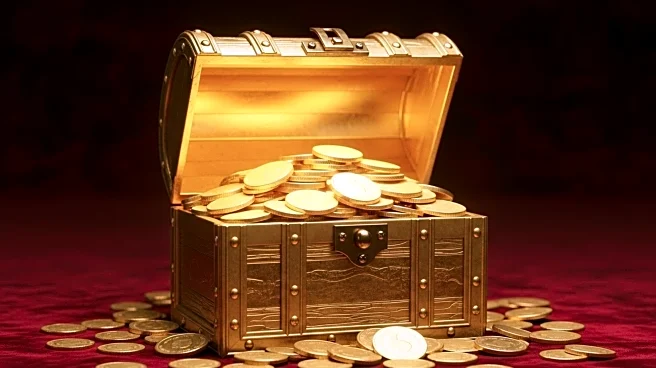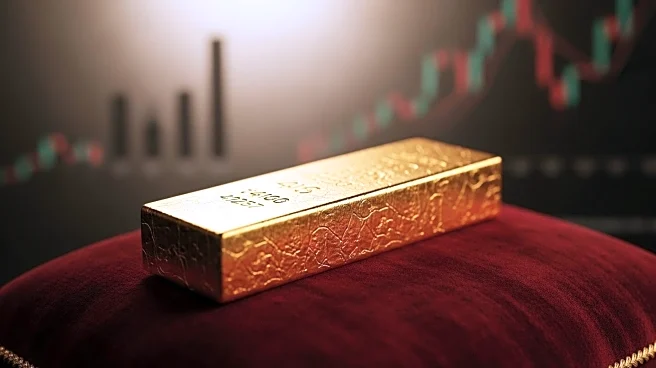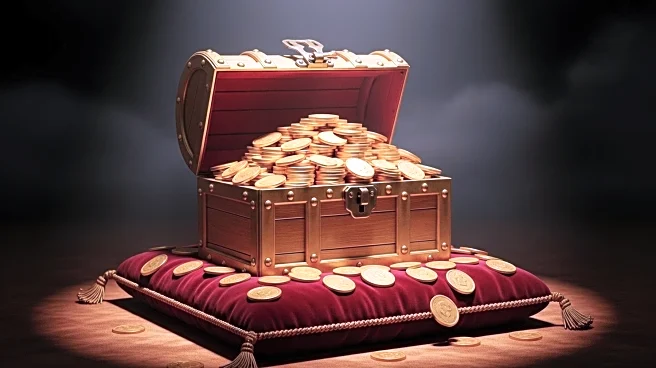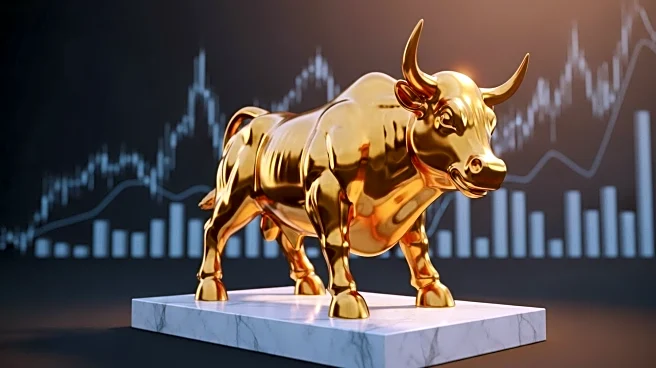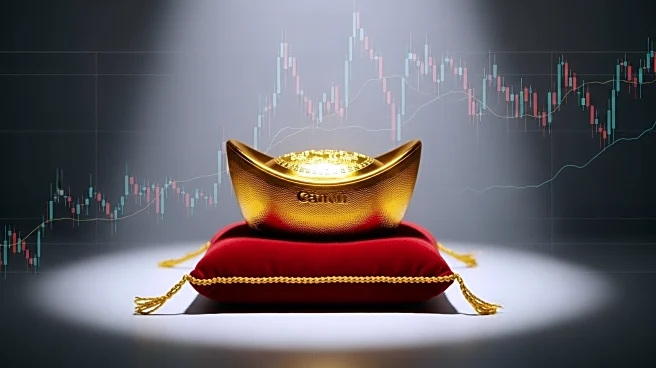What's Happening?
Gold prices have reached an unprecedented $4,000 per ounce, driven by investor demand for stability amid economic uncertainty. The surge in gold prices is attributed to a combination of factors, including a 10% drop in the U.S. dollar index and a 2.9% inflation rate, which exceeds the Federal Reserve's target. The Fed's recent interest rate cuts have made short-term debt instruments less attractive, further boosting gold's appeal. Central banks and retail investors are increasingly turning to gold as a hedge against inflation and geopolitical tensions, particularly following U.S. sanctions on Russia.
Why It's Important?
The rise in gold prices reflects broader economic trends and investor sentiment. As traditional investments like Treasury bills become less appealing, gold is seen as a safe haven asset. This shift could have significant implications for financial markets, influencing investment strategies and portfolio allocations. The increased demand for gold also highlights concerns about inflation and currency stability, which could affect consumer purchasing power and economic growth. Retail giants like Costco and Walmart are capitalizing on this trend by selling gold bars, indicating strong consumer interest.
What's Next?
Market analysts are divided on the future trajectory of gold prices. While some, like Ray Dalio, advocate for increased gold investment, others warn of potential price corrections. The Federal Reserve's upcoming meetings and potential interest rate adjustments will be closely watched, as they could influence gold's attractiveness relative to other assets. Additionally, geopolitical developments and economic policies will continue to impact investor behavior and market dynamics. The ongoing demand for gold suggests that it will remain a key focus for investors seeking to navigate economic uncertainties.

